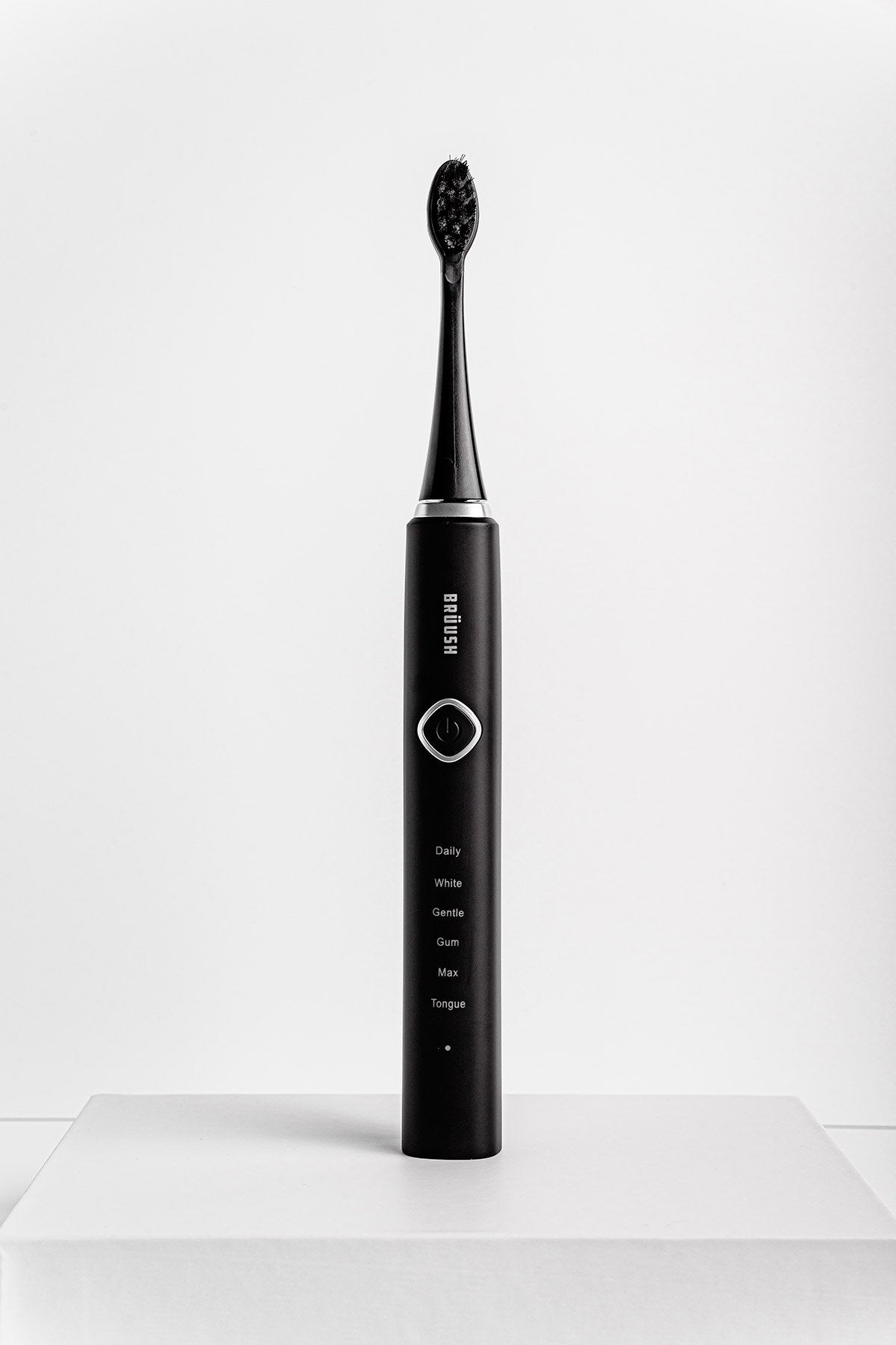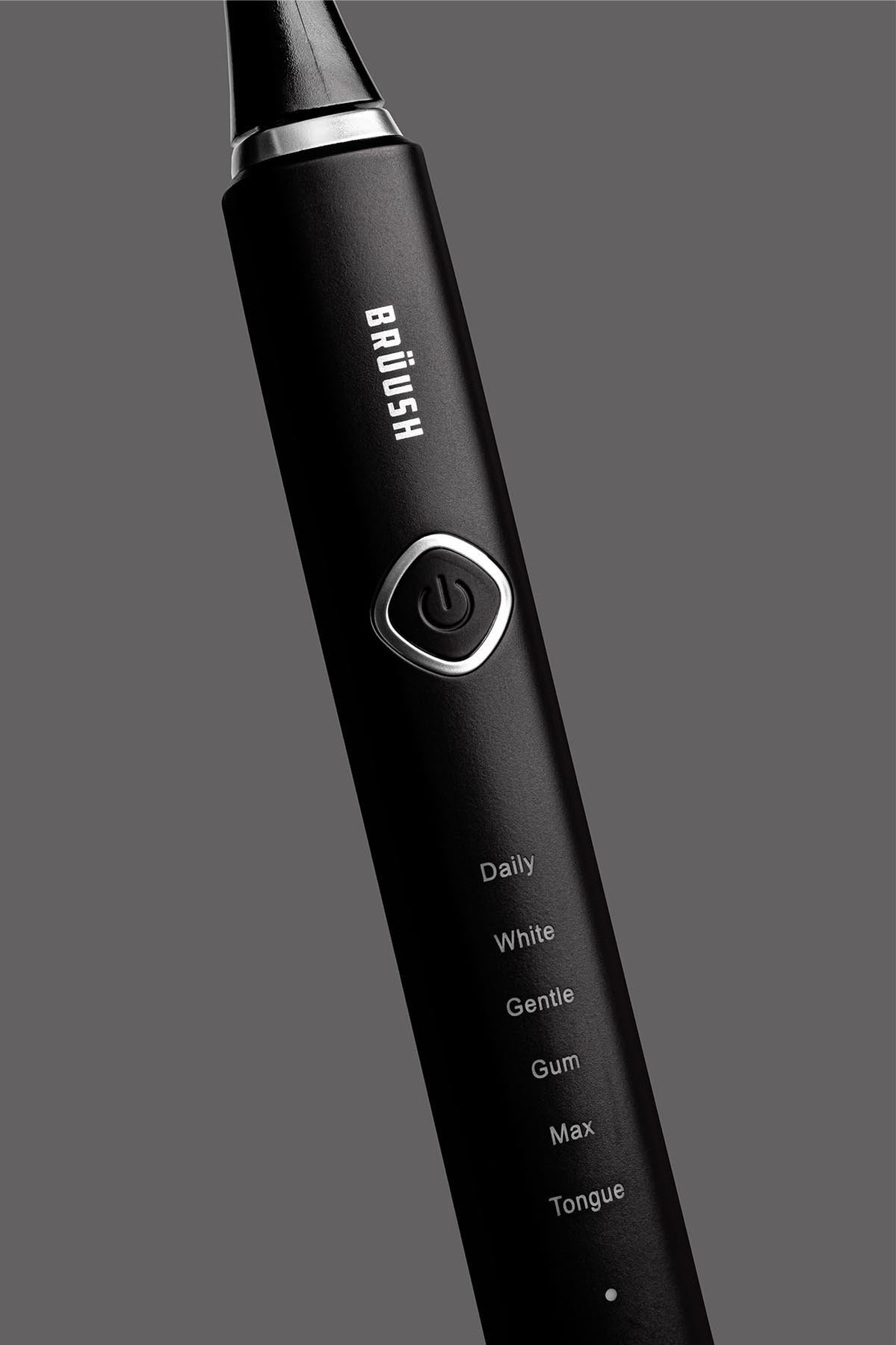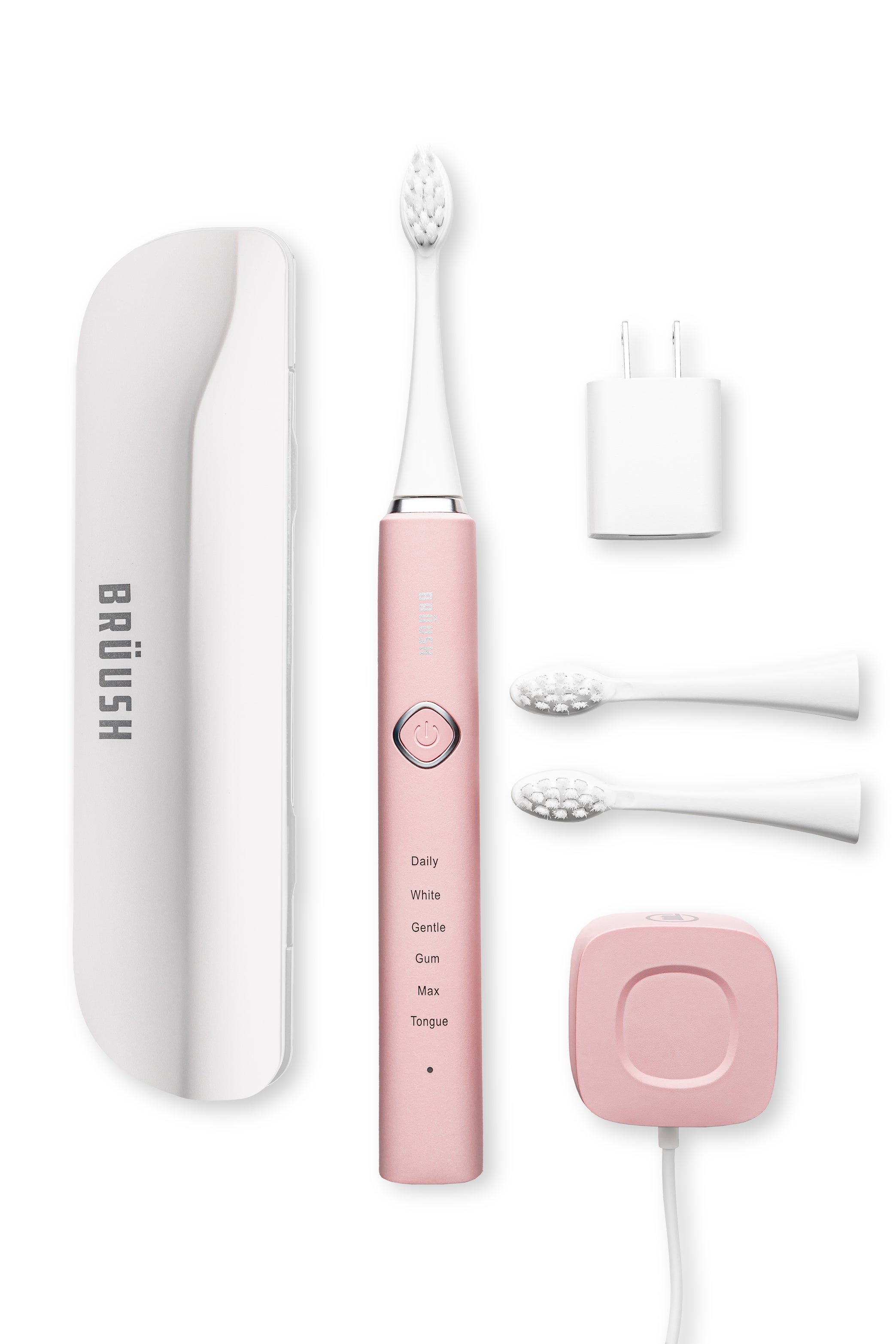All toothbrush heads have a lifespan. Once in use, they go through a great amount of wear and tear. Not only that, but they also become a breeding ground for bacteria—even if you’re rinsing it out with hot water after every use. If you’re using a manual brush, that means you’ll need to replace your entire brush once it’s time. For electric toothbrushes, you’ll just need to replace the toothbrush head.
Since you’ve made your way to this post, you’re likely thinking that it’s about time to replace that worn down, old toothbrush head. Either that, or you’re checking to make sure your oral health habits are up to snuff. Whatever your reason, we got you.
Below we’ll go through dentist recommended guidelines for:
- Exactly how often you should be changing your toothbrush head
- How to tell when it’s time to swap it out for a fresh one
- And ways to extend your toothbrush “shelf life”
How Long Does a Regular Toothbrush Last for?
As mentioned, toothbrushes have a lifespan—particularly when it comes to toothbrush heads. Now, if you haven’t looked into this before, then this number might surprise you.
The American Dental Association (ADA), Centers for Disease Control and Prevention (CDC), and your neighbourhood dentist, recommend that people change their toothbrush every 3-4 months. You’re probably looking at your toothbrush thinking about how it’s time to get yourself a fresh one. At around the 40-day mark (depending on how hard you brush your teeth, and the quality of the brush), bristles begin to flare and splay. This of course makes it less effective, as bristles need to be nice and straight in order to wiggle between the nooks and crannies of your teeth. It won’t remove plaque as well at this stage, nor will it effectively polish your teeth.
So the gist is, if you want to keep your toothbrush effective and clean, keep to the 3-4 month replacement schedule. This of course doesn’t do the environment any favors. There are over one billion plastic toothbrushes thrown away every year in the US, which creates 50 million pounds of waste annually.
Now that’s a picture.
If you’re looking to reduce your plastic waste, we recommend using a bamboo toothbrush, or switching to a power toothbrush (where you only need to replace the head of the toothbrush, not the entire apparatus/handle).
How Often Should I Change my Electric Toothbrush Head?
We’ll keep this nice and short. You should switch your electric toothbrush head every 2-3 months (before your bristles flare and splay too much). It’s going through the same process as a regular toothbrush, and therefore should follow the same rule. Keep your dentist and your teeth happy by using a clean toothbrush!
BRÜUSH TIP: Set a recurring reminder in your calendar so you never forget to switch your brush head. And if you’re using a Brüush toothbrush, subscribe for your brush head refill plan and get fresh replacements sent straight to your door. We'll send you an email reminder to change your brush head every two months.
How does our Refill Plan work? You can either go for a one-time purchase with 3 new brush heads, or subscribe and save 25% every 6 months on your shipment.
You can cancel anytime, and shipping within the U.S. and Canada is always free.
Signs You Should Change Your Toothbrush
Whether you’re following the suggested toothbrush replacement schedule or not, there are a few instances where you’ll have to replace your brush head/toothbrush earlier than the 3-4 month mark.

- Your toothbrush is damaged. This mainly applies to the nylon bristles on the brush head, and one of the most common signs of wear and tear. After the 3-4 month mark (or earlier if you’re a tough brusher), your toothbrush bristles will begin to wear down. The bristles then start to take on a different texture—often more sharp and jagged, which can even lead to gum damage.
BRÜUSH TIP: If you’ve lost track of time and think your toothbrush head is looking worn down, it’s probably time to replace it.
- You got sick. As mentioned, pesky bacteria like to sneak their way into toothbrush heads and make a cozy little home. When you use a toothbrush while sick with something like strep throat, the flu, or even a common cold, bacteria can still be left on your brush long after your cold is gone.
We suggest using a more temporary, cheaper “sick toothbrush” that you can easily toss away. If you don’t, your dirty toothbrush can actually make you sick.
- Someone else used your toothbrush. Oops. If you grew up with siblings then you’ve probably had this happen a few times. The safest bet is to replace your toothbrush/brush head if you know someone else that you’re not as familiar with has used it.
If it’s a family member or partner, you can just ask to see if they’ve been feeling sick or having any other issues. If yes, toss it. If no, you’re probably fine to give it a good wash and continue using.
How to Prolong the Life of Your Toothbrush
Give your toothbrush the glow up treatment. If you’re trying to revive a worn down brush, then most of these tips won’t work. BUT, if you’re looking to be proactive and help extend the life of your toothbrush, then we’re happy to tell you that these tips should work!

Tip 1: Properly clean your manual or electric toothbrush. From properly rinsing out all of the toothpaste and food debris bits, to wiping between the brush head and base, it’s important to keep your toothbrush clean and free of germs.
Tip 2: Wash your hands before using your toothbrush. Going off of the above point, this is an important one that not many people actually do. Our hands are busy throughout the day, making contact with many items and touch points. Make sure you’re not putting germs onto your toothbrush by thoroughly washing your hands before picking it up.
Tip 3: Don’t brush too hard! If you use too much pressure when brushing your teeth, the bristles can become deformed. As mentioned earlier, your toothbrush needs straight bristles to get all those hard to reach places. Particularly when using an electric model that is doing most of the work, more pressure does not equal a better clean (it can actually be the opposite).
Tip 4: Store it upright and clear from other items. If you follow all of the previous steps but don’t do this one correctly, then you’ve failed. In order to keep your toothbrush in tip-top shape, it needs to be stored properly. Keeping it upright means that any of the residual water can drip down and let the brush head fully dry out. Making sure it’s out of harm's way and not pushed up against other products or surfaces helps to ensure that the brush doesn’t get dirty.
We also recommend using a travel case or some sort of closed container when taking your toothbrush on any trips. This helps to keep it clean and safe!
Follow these tips and you’ll be setting your toothbrush up for success. They don’t take much time and can actually make a difference in prolonging your toothbrush’s life.
Your toothbrush goes through a lot of work to keep your teeth looking so good, and from keeping bad breath at bay. From removing plaque, to buffing off surface stains, to massaging your gums, there’s no wonder it needs to be replaced regularly. So, if there’s one rule from this blog that you should absolutely follow—it’s to change your toothbrush head every 3-4 months! Do it for your dental health.






